Bird News from Nial Moores
In still-mild and autumnal conditions (with a day of sunshine, light winds and a low of 9C rising to 17C or 18C in the afternoon) another day was spent walking the trails in Igidae. As might be expected, there was much overlap in species and numbers with earlier in the week, though with only one Red-flanked Bluetail, but an increase in Light-vented Bulbul and Grey Bunting (both to five), Brown-eared Bulbul (to 150, including a single flock of 80), and Siberian Accentor, with probably 6+ logged during the day.
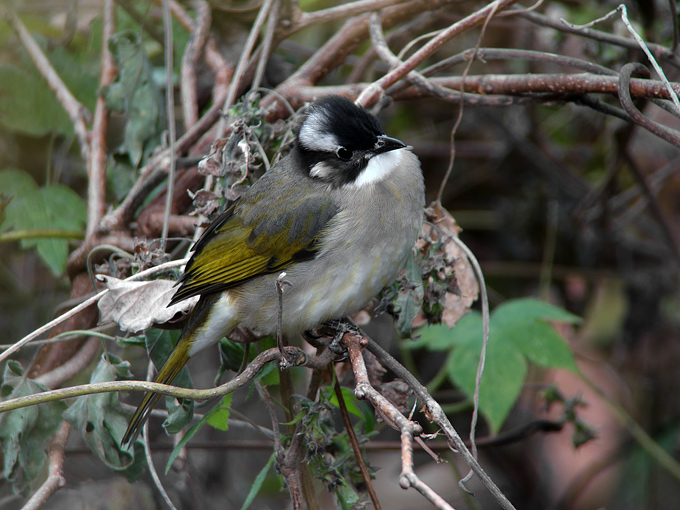
Only two of these accentors were seen well, revealing in brief side-by-side views and in the images tremendous differences in plumage saturation. According to Lars Svensson’s Fourth Edition of Identification Guide to European Subspecies, “adults = First years on plumage”, with a complete summer moult in adults; and only worn breeding birds, presumably pre-moult, look paler in e.g. the supercilium, with darker spotting on the breast feathers. According to the same text, north-eastern badia is “somewhat darker on crown than nominate” and “more rufous-tinged on mantle and scapulars”. Brazil’s Birds of East Asia field-guide confusingly illustrates First-years as paler than summer-plumaged adults, while the text adds that badia is “smaller and darker, with richer chestnut mantle, deeper ochre underparts and more strongly rufous flank streaks” than the more southern-breeding nominate subspecies.
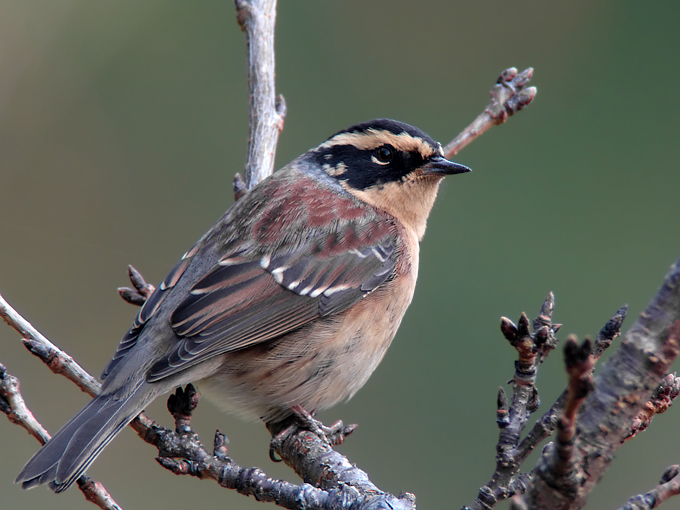
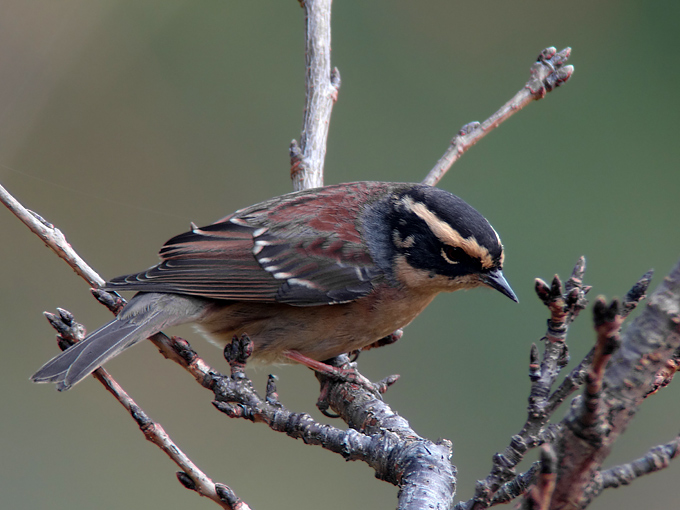
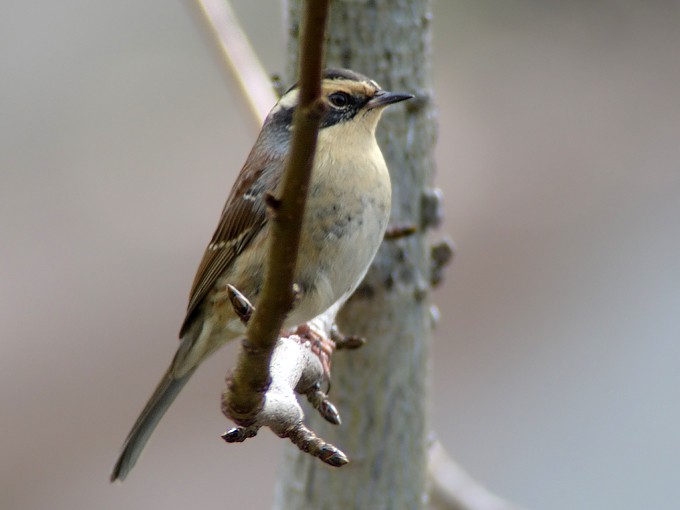
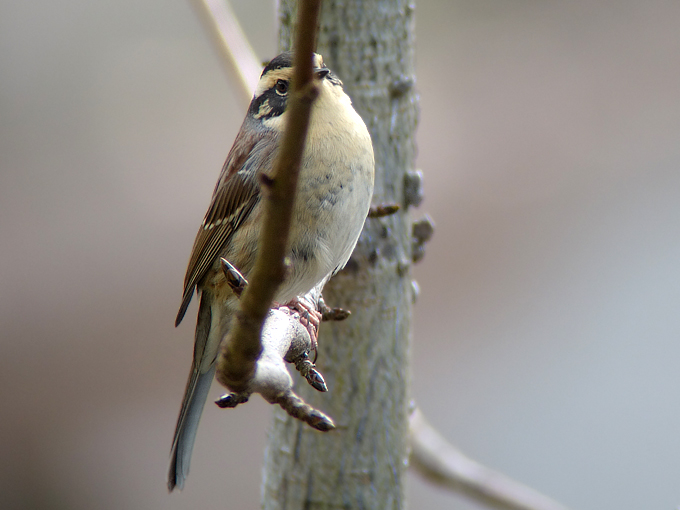
Other species of note included a flock of 16 Mandarin Duck (out on the sea), carrying with them a single Baikal Teal and a single hybrid Mallard x Eastern Spot-billed Duck; single White’s Thrush and Yellow-bellied Tit; and heard only, 3-4 Eurasian Bullfinch, and one or two Tristram’s and Black-faced Buntings.
Oddest for the day (and actually a welcome sight to this vegetarian’s eyes!) was a Bull-headed Shrike seen feeding on berries, or much less likely on insects that were on the berries. The bird hung almost upside down bulbul-like to access berry-clumps three times in probably five minutes. Each time, it plucked at and swallowed something, before eventually perching up in the same tree to “cough-up” a large pellet. A quick google search reveals that other shrike species have been recorded eating fruit, especially in times of food shortage (see e.g. http://www.besgroup.org/2014/01/24/tiger-shrike-eats-bridelia-tomentosa-fruit/). However, it appears that there is still likely to be plenty of food available for a Bull-headed Shrike to feed on – with several large insects still on the wing, a small rodent heard, and probably 400 Vinous-throated Parrotbills logged during the day etc. Has anyone seen Bull-headed Shrike feeding on fruit before, and does anyone know the name of the berry-laden plant in the image please? Thank you in advance!
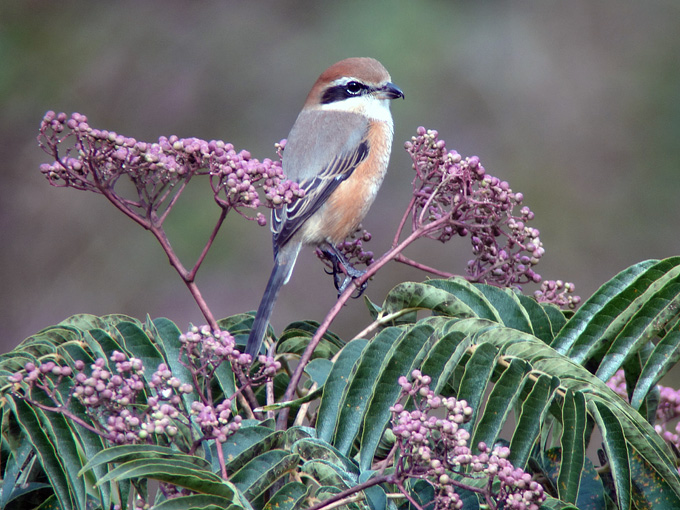
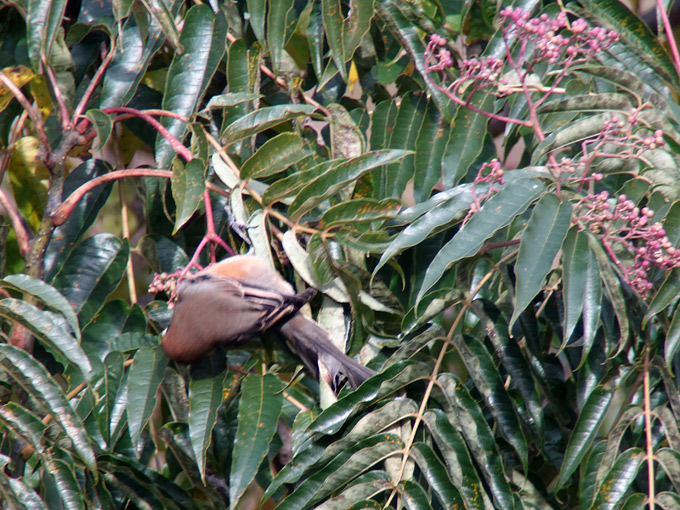


Thanks to Dr. Shim Kyu-Sik for mailing about the plant (Nov 26) – identifying it as Common Eucaphis Eucaphis japonica.